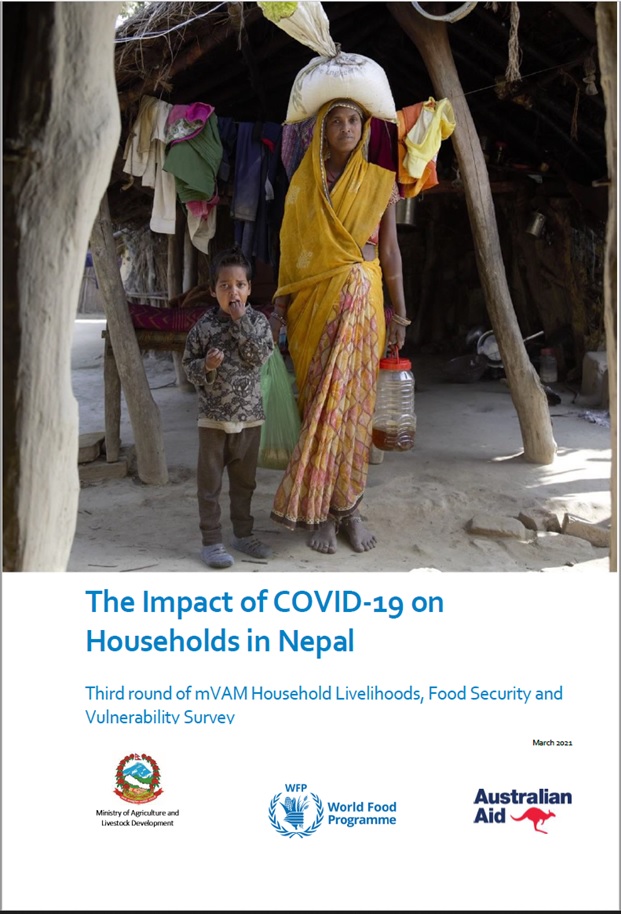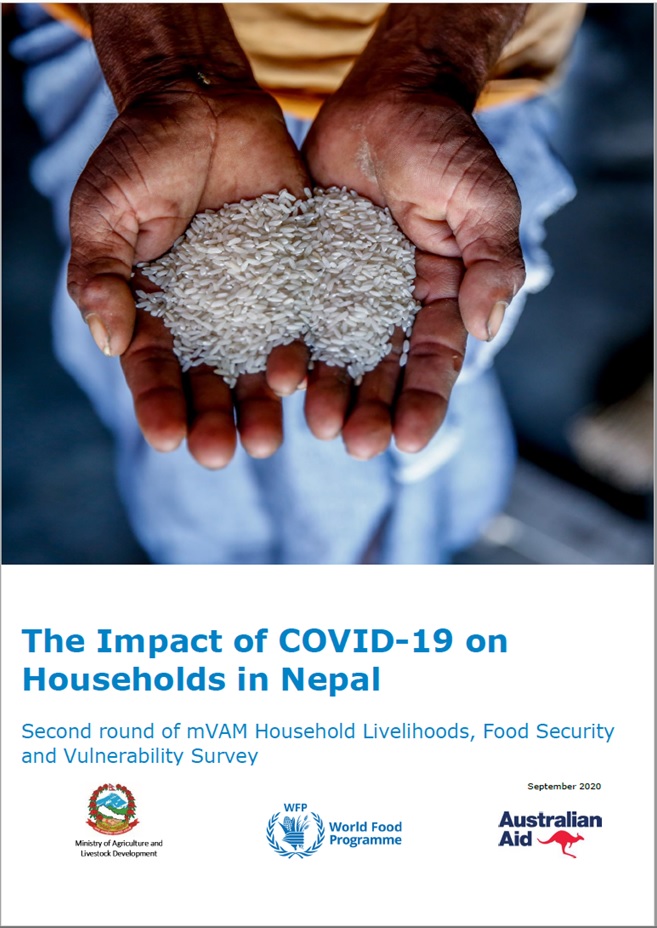Food Security Bulletin No.38

209 Village Development Committees (VDCs) across Nepal are reported to be moderately food insecure (Phase II) - a stressed situation where most of the households have minimal access to, or availability of food. Overall the country is in a minimal food insecurity phase (Phase I). The District Food Security Networks (DFSNs) of Dolpa, Jumla, and Bhojpur have reported a better off situation compared to last year same period due to the improved supply of food, increase in maize production, income from the sale of herbs (Yarchagumba) and cash crops, and WFP's support. Household food stocks measured 23 percent lower than last cycle. NeKSAP's household survey revealed an average household food stock of 403 kilo (575 kilo in Terai, 351 kilo in the Mountains, and 224 kilo in the Hills). With the current level of stocks, average household food sufficiency in months ranges from three in the Hills to six in the Terai, with an average of 4.6 months. Daily wage, crop sales, remittances, and private enterprises continue to record largest share of household income with their contribution recorded at 28, 18, 16, and 13 percent respectively. Harvesting of the main winter crops, wheat and barley, is underway. Preliminary estimates obtained through the DFSNs and stakeholder consultations indicate promising wheat production except in the districts of Dailekh, Jajarkot, Rukum, Kalikot, Panchthar, and Taplejung. The year-on-year Consumer Price Index (CPI) increased by 10.2 percent in March 2013; this is close to the inflation rate re-corded in India (10.4 percent) during the same period. Overall, the food security situation in the next quarter (April-June 2013) is expected to improve in most of the areas from the harvesting of wheat, remittances (including the hand-carried remittances), and income from cash crops (e.g. tea and carda-mom), fruits (e.g. mango), and Yarchagumba. Nevertheless, some of the VDCs of Dolpa, Dailekh, Ramechhap, Udayapur, Ter-hathum, Solukhumbu, Panchthar, Okhaldhunga, Khotang, Bhojpur, and Taplejung might experience a seasonal deterioration in their food security situation. Some VDCs in Dailekh (Naumule, Toli, Chauratha, Bhawani, and Chamunda) also require close monitoring as these VDCs might slide into high food insecurity, or a crisis phase (Phase III).
Download English Version Download Nepali Version
Leave a Comment
News & Events
- Brief on the Food Security Situation in Nepal (Mid-July to mid-November 2017)
- Launch of Food Security Information System for Nepal
- Second Advance Estimate of 2016/17 Wheat Production in Nepal using CRAFT
- Brief on the food security situation in Nepal (Mid November 2016 to Mid March 2017)
- Updated NeKSAP guidance on food security response analysis and district food security monitoring

